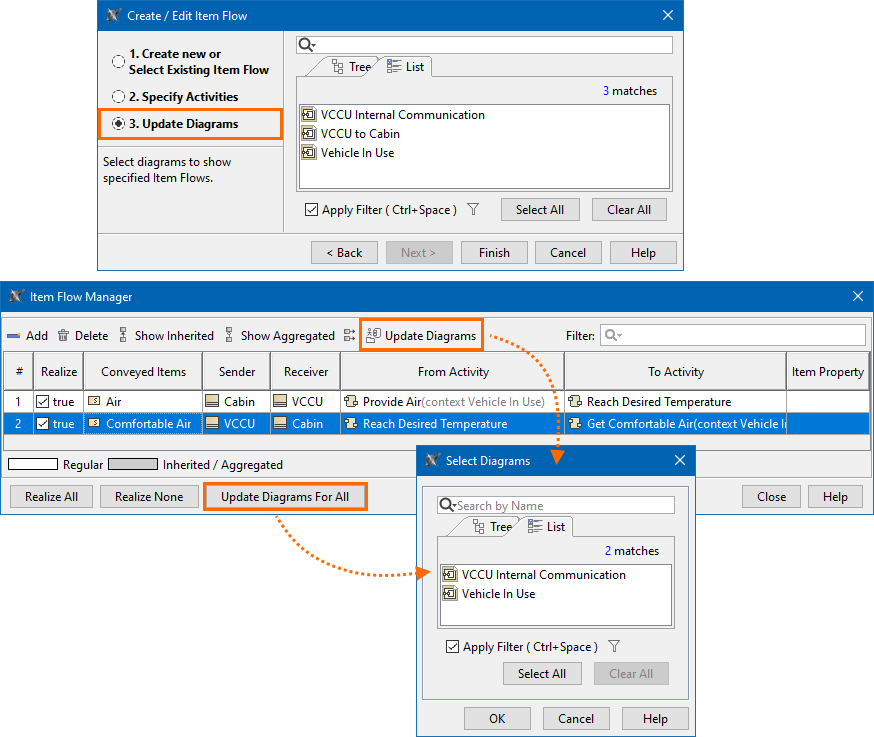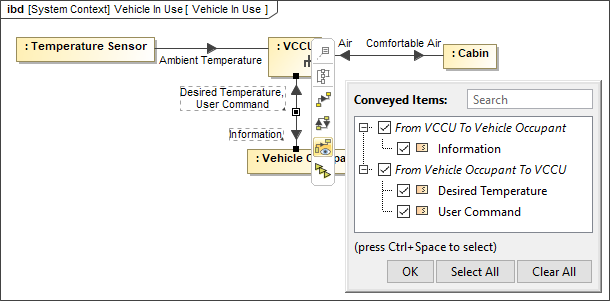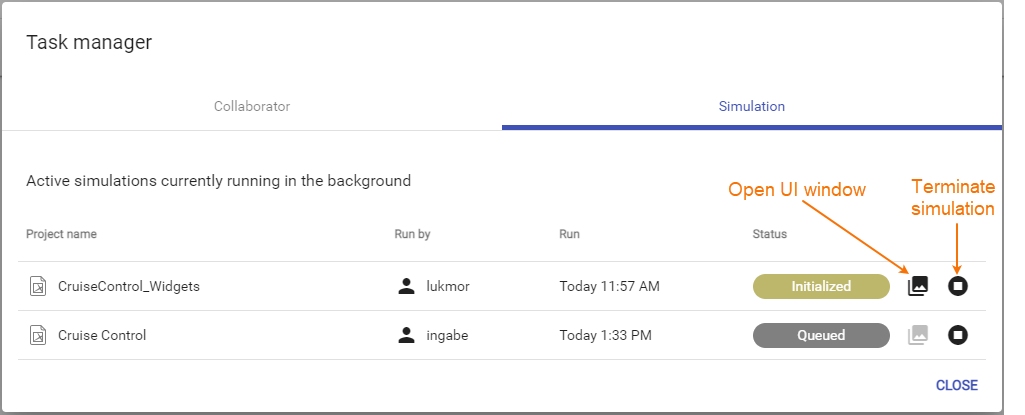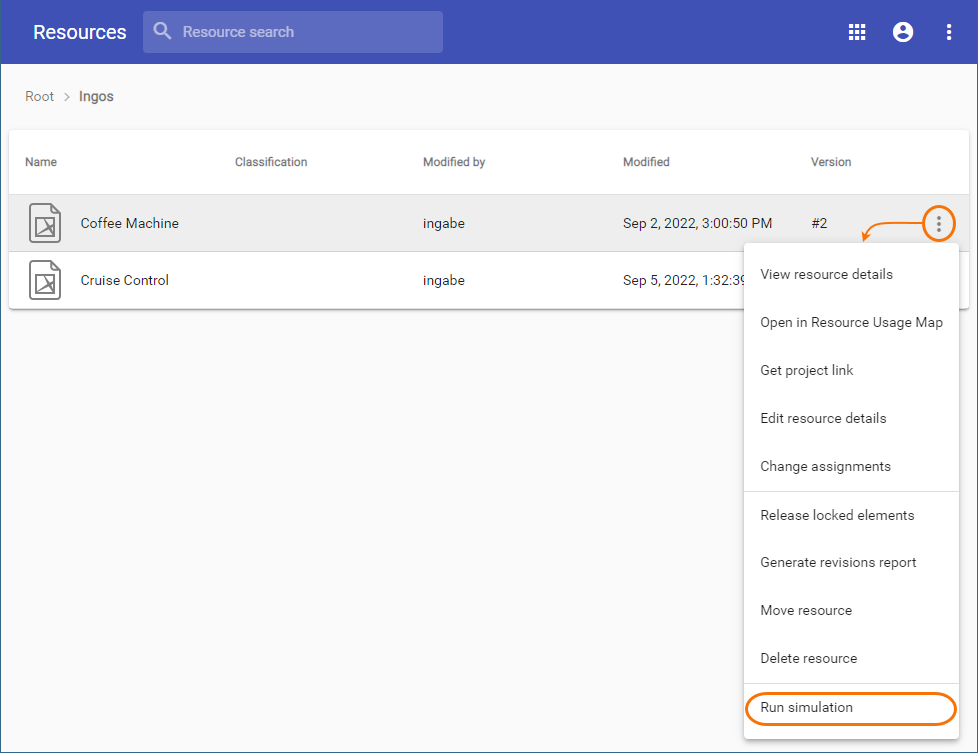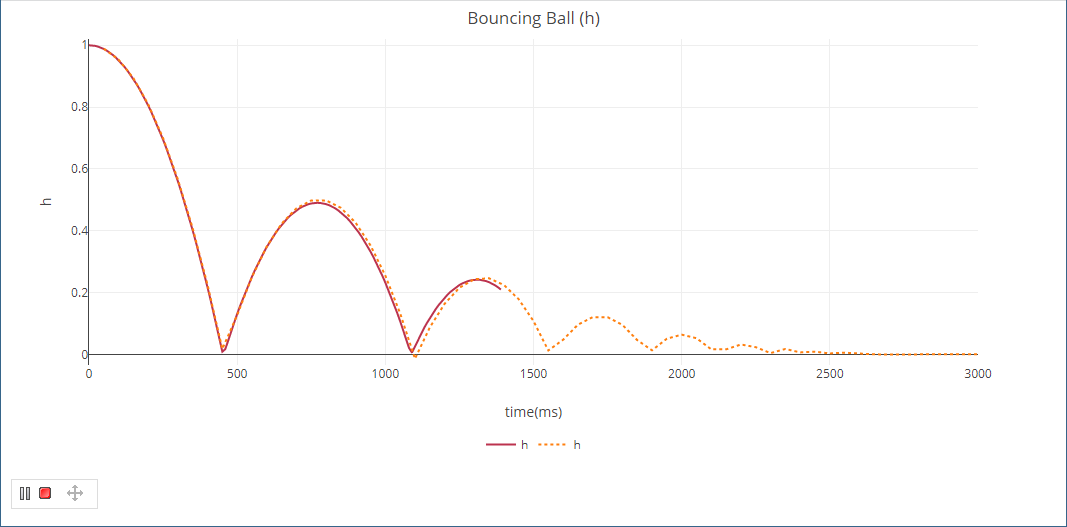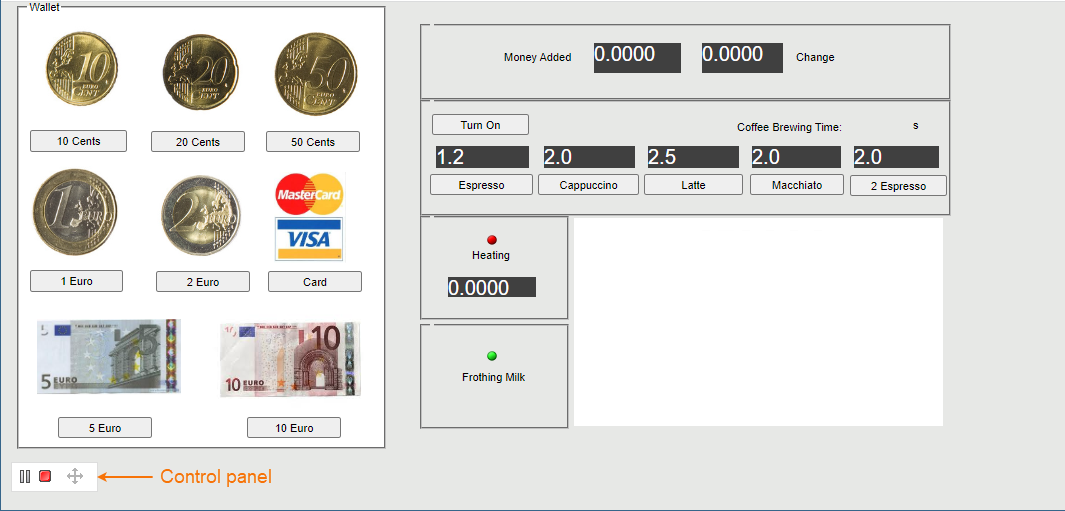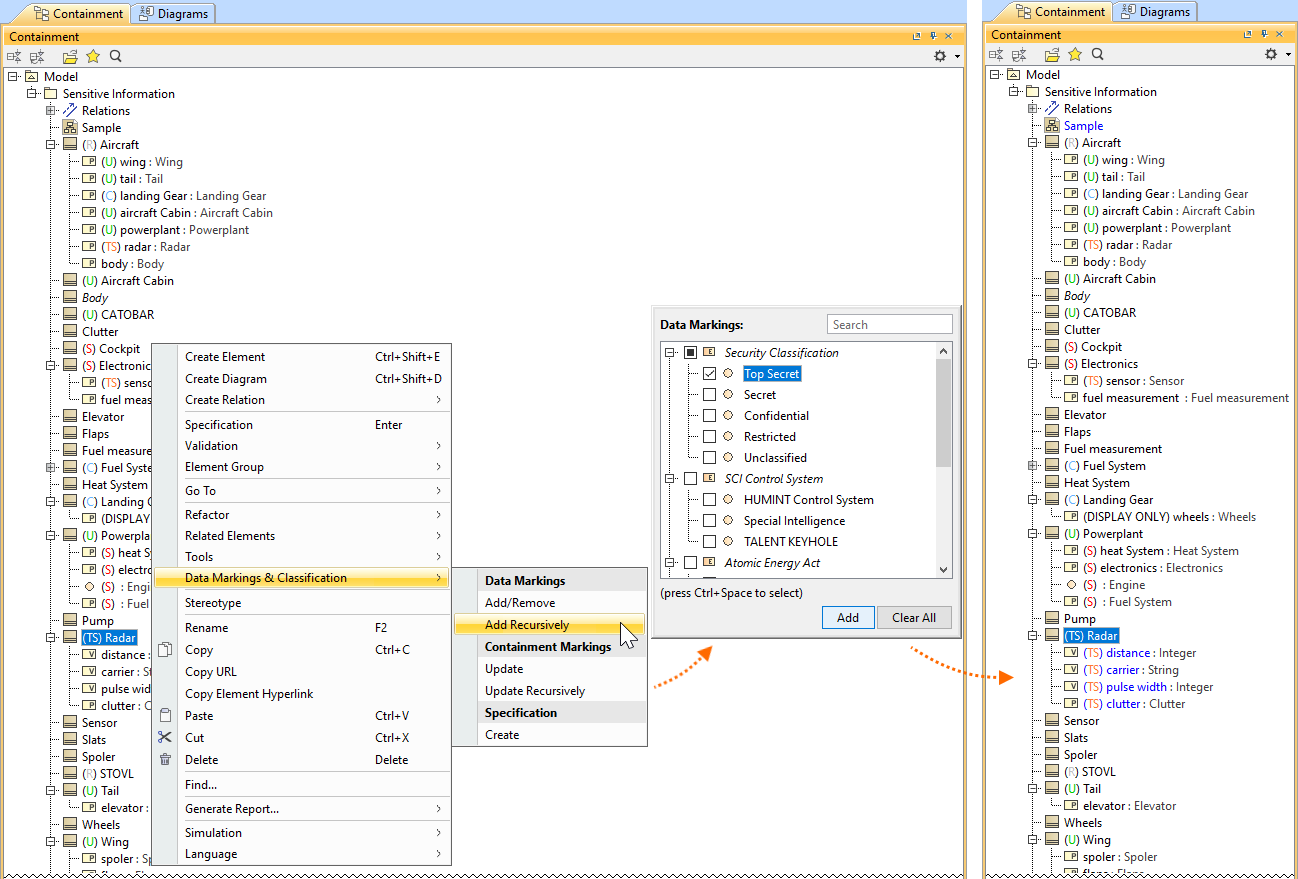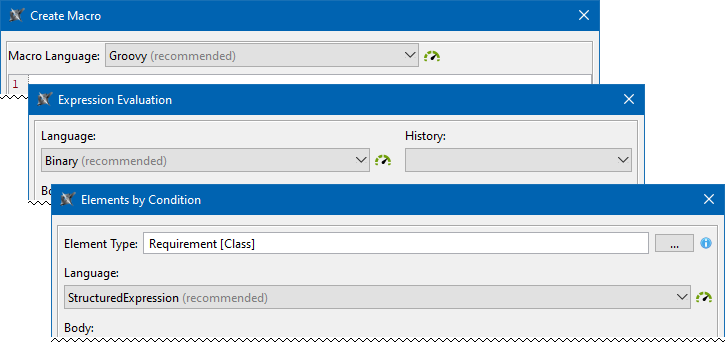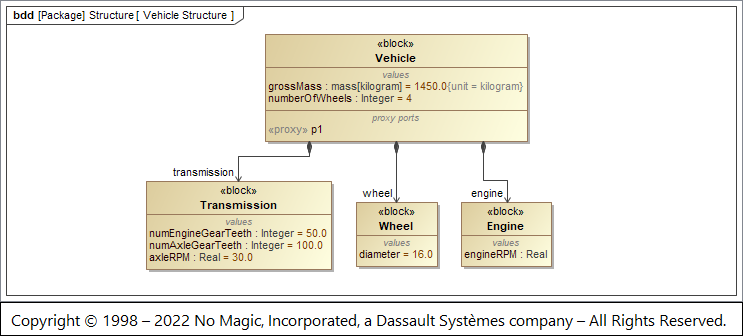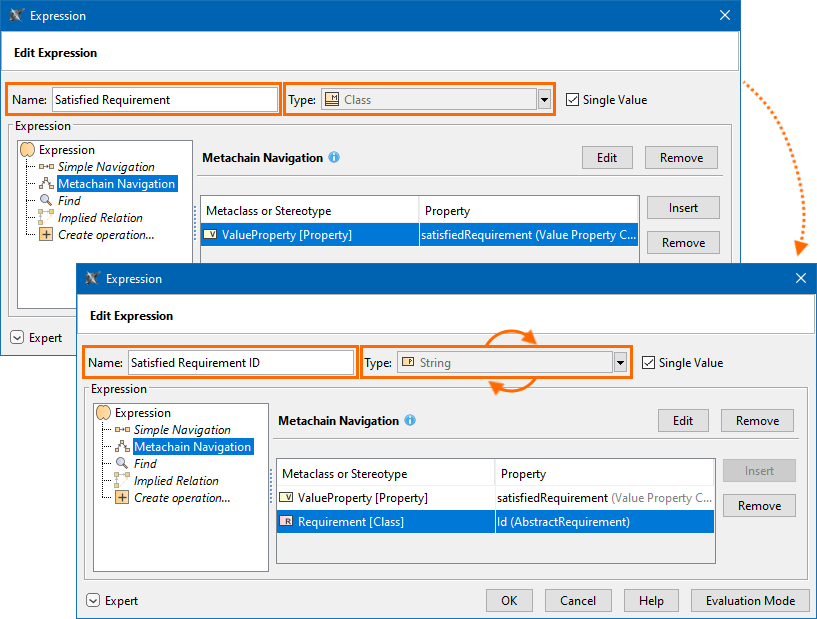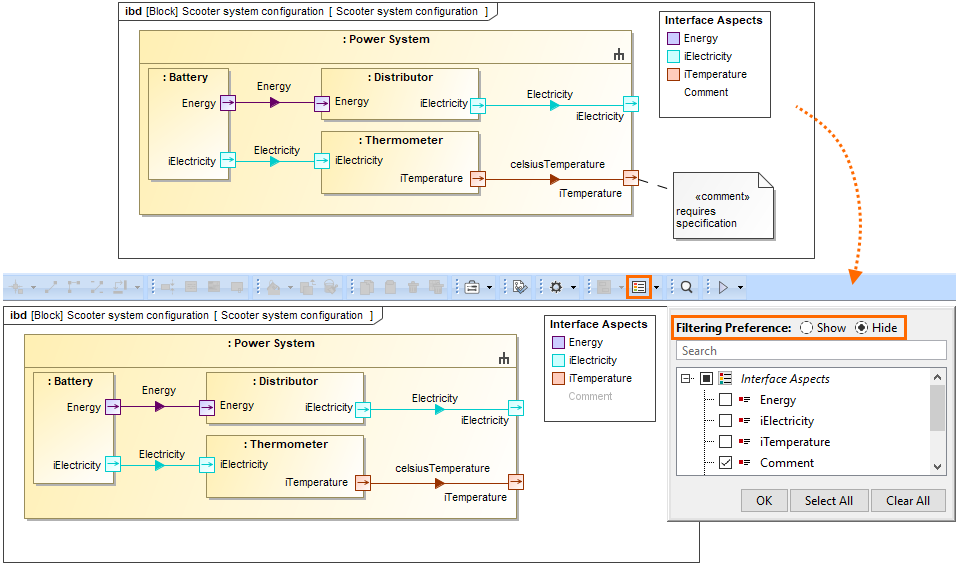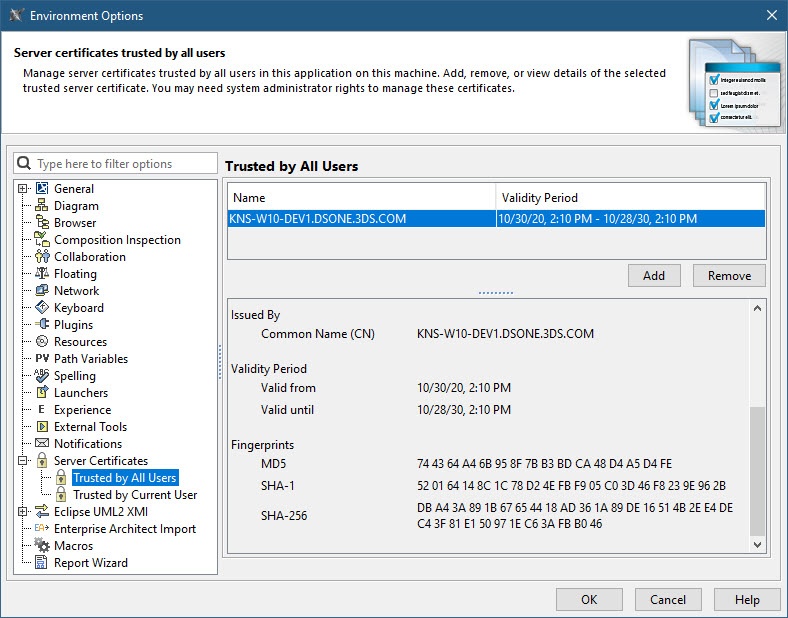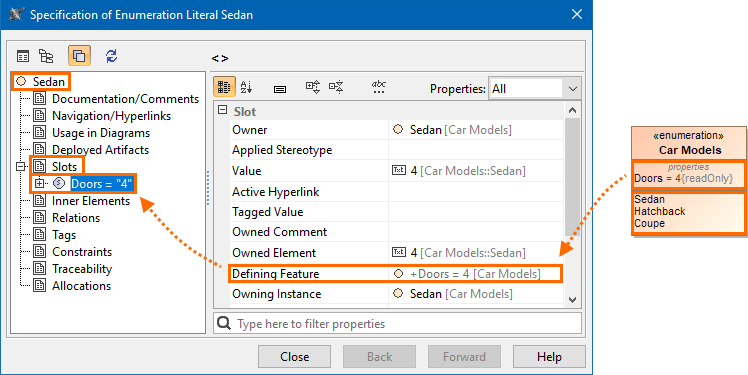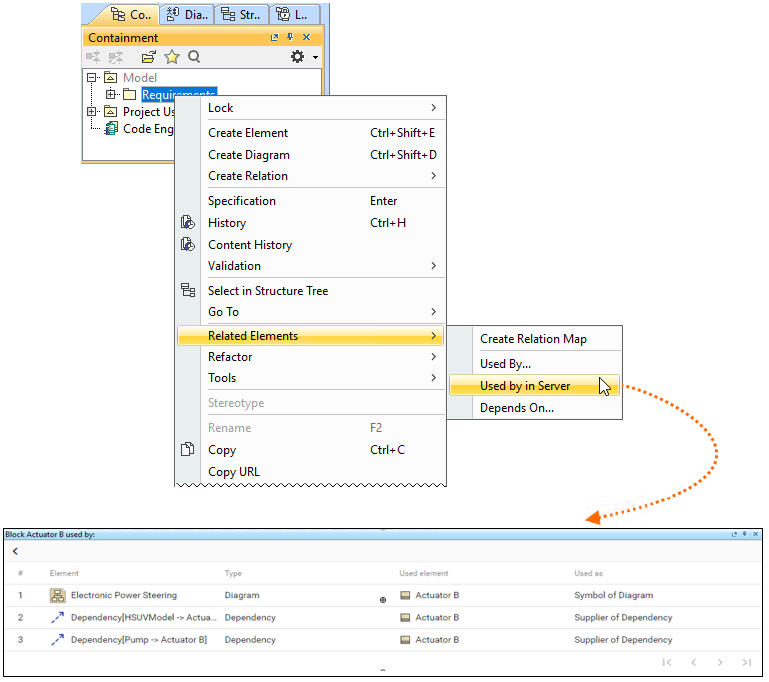Released: July 1, 2022
The 2022x release introduces several Instantiation Wizard improvements that will allow you to customize Instance Specifications before creating them, e.g., define their names and apply custom stereotypes. In addition, the plugin now supports the upcoming SysML 1.7 specification and provides an easier way to perform requirement verification in Requirement Tables.
Version 2022x has a handful of new simulation capabilities to help you analyze your models more effectively than before. The highlight of this version is server-side simulation, allowing you to simulate Teamwork Cloud models using a web interface. Other enhancements include SIMULIA Process Composer integration, the ability to check requirements under dynamic conditions, improved visualization of verification results in Instance Tables, and more.
The 2022x release launches the Data Markings and Classification Plugin for working with classified or sensitive data. This plugin allows system and software engineers, enterprise architects, and others to mark model elements to indicate different levels of classification or sensitivity.
For general modeling, this release presents diagram banner creation, improvements to Structured Expressions, extended filtering by Legend items functionality, an easier and safer way to manage secure connections, pre-bundled plugins, Product Line Engineering Plugin, and Project Merge Plugin improvements.
Beginning with this version, Reader is introduced as a modeling tool mode.
Additionally, collaborative modeling has been further enhanced with production-ready Global Element Usage Search functionality, allowing you to effectively analyze element modification impact in decomposed, highly interlinked models.
To download the latest version, see Downloading installation files. For further information, check the product documentation.
SysML Features
Improved Item Flow Management Experience
SysML Plugin 2022x Refresh1 brings several improvements to Item Flow management, which include:
- Selecting diagrams to update flows. From now on, a new Item Flow realization does not end up with unexpected results in existing diagrams (previously, the flow may have been updated or not), as a simple diagram update control mechanism is introduced across the project. The Item Flow Manager dialog and the Create/Edit Item Flow wizard are now enriched with the ability for you to choose which diagrams with the realizing elements to update.
- A quick way to show/hide flowing items in a diagram. Display/hide the flowing items quickly using the dedicated action in the smart manipulator.
- Element type representation in the Item Flow Direction selection. Selecting the direction for the Item Flow in the Create/Edit Item Flow wizard is now easier as the icons indicating element types are displayed next to the element names, allowing you to identify the sender and receiver more easily.
- Auto-remove not realized Item Flows. You can now specify the newly introduced Remove Not Realized Item Flows SysML project option to automatically remove Item Flows after the last element that realizes them is deleted. Additionally, you can run the validation to check whether there are any Item Flows in the model that are not realized.
Learn more about Item Flow management >>
Requirements Verification in Instance Tables
In addition to performing requirements verification in Requirement tables, now you can also carry it out in Instance tables. While the verification in a Requirement table allows you to perform the analysis for a single instance set as the context, the verification in an Instance table allows you to perform the analysis for multiple instances at once via the Enable Patterns-Based Verification option. It allows you to analyze multiple instances conveniently and efficiently.
Performing the Requirements verification analysis in the Requirement table vs. the Instance table.
Learn more about requirements verification in Instance Tables >>
Other Improvements
- When you create an Action directly inside the Structured Activity Node, the Allocated To property is specified automatically according to the allocation mode.
Simulation Features
Server-Side Simulation Improvements
Cameo Simulation Toolkit 2022x Refresh1 brings multiple improvements to the server-side simulation capability released in the previous version of the product.
Simulation Task Manager
Now you can conveniently view and manage all server-side simulations in the Task Manager. The Task Manager not only provides the information about all currently running and queued simulations but also allows you to terminate them and open the simulation UI window.
Simulation Task Manager.
Running simulations via the Resources application
Cameo Simulation Toolkit 2022x Refresh1 introduces a new way of simulating your models on the web. In addition to using REST API, a Python client, or Cameo Collaborator for Teamwork Cloud, you can now run server-side simulations via the Resources web application user interface as well. If a model has a Simulation Configuration and the specified UI, you will be able to run the simulation right from the resource's menu, and the UI window will open once the simulation is started.
Running simulation via the Resources web application UI.
Live Time Series Charts
From version 2022x Refresh1, server-side simulation supports live Time Series Charts. Once you start the simulation and the UI window opens, you can view the Time Series plot being updated in real-time as shown below.
Live Time Series Chart.
Other
- When you simulate a model with a UI mockup or Time Series chart, the UI window that opens during model execution now has a Control panel allowing you to start, pause, resume, or terminate the simulation.
- Now the Timeline and Time Series Chart data can be exported to the HTML/CSV format and stored in the Documentation property of the result Instance Specification.
- Teamwork Cloud has a new Simulation Manager role which allows you to get and review simulation results as well as terminate the simulations executed by other users.
Enhanced Watch Pane
The Watch pane has been improved to allow adding runtime values directly from Internal Block Definition and Parametric Diagrams. In addition, you can now edit the values added to the Watch pane and see how the simulation results change accordingly.
Adding runtime values to the Watch pane directly from an Internal Block Diagram.
Data Markings and Classification Plugin Improvements
The 2022x Refresh1 version introduces new and improved functionality in the Data Markings and Classification Plugin, including:
- Display Containment Markings. You can now choose to have Containment Markings that are displayed on the owner element, indicating the owned elements' Data Markings. They are displayed in parentheses as postfixes next to the element name. Use the newly introduced Element Types with Containment Markings project option to specify which element types can have Containment Markings displayed on them. This feature allows you to quickly see the owned elements' Data Markings by simply glancing at the owner element. Learn more about Containment Markings >>
The Containment Markings are updated recursively for the package Sensitive Information and its contained elements.
- Sensitive Element Redaction. The Sensitive Element Redaction model transformation allows you to narrow down the full model by removing elements with the selected Data Markings. Controlling what elements should constitute the model based on their Data Markings allows you to provide a redacted model to suppliers who can only have access to some model elements. Learn more about Sensitive Element Redaction >>
A model transformed via Sensitive Element Redaction by removing elements with Secret (S) and Top Secret (TS) Data Markings.
- Add Data Markings recursively. From now on, in addition to adding Data Markings to individual elements, you can add them recursively to multiple project elements via the owner element. Use the newly introduced Sensitive Element Types project option to specify which element types can have Data Markings added to them recursively. This feature allows you to add Data Markings to multiple elements conveniently and efficiently. Learn more about adding Data Markings recursively >>
Adding Data Markings recursively to the Block Radar and its Value and Part Properties.
- New validation rules. The new features listed above are supported with additional validation rules.
- The Invalid Containment Markings rule checks if the Containment Markings match the Data Markings of owned elements.
- The Missing Data Marking checks if there are elements that are specified to have Data Markings in the Sensitive Element Types project option but do not have any Data Markings added.
- When a property is typed by a sensitive element, the Inconsistent Data Markings (Property) validation rule checks whether the property has a matching Data Marking or if the sensitivity level of the added Data Marking is not lower than the sensitivity level of the Data Marking added to the type.
Learn more about validation rules >>
Client-side Performance Improvements
Evaluate Operation Performance
If you are tired of seeing progress bars while performing various operations in the tool, you can now use the Evaluate Operation Performance functionality, which allows you to view performance diagnostics that help determine the reasons behind degraded tool performance if it is caused by the execution of expressions (e.g., derived properties, smart packages, legends, validation rules) defined in the model. You can also analyze the building of matrixes and tables.
Adorning diagram symbols operation performance evaluation.
Additionally, you can now see the language recommendations based on their performance. The recommendations are visible via the 'recommended' indication and the performance indicator icon in the language selection menu. The icon color reflects the performance: green for fast (Binary, Structured Expression, Groovy), yellow for medium, and red for slow. It allows you to see the languages' performance when choosing one for your operations and make an informed decision.
Learn more about operation performance evaluation >>
Other Improvements
- Installation file for Apple M1/M2. 2022x Refresh1 release provides two different installation files for macOS based on its processor architecture: in addition to the x86 one, now there is also a separate installation file for the one based on ARM (i.e., Apple M1). It is bundled with ARM architecture Java. The modeling tool runs up to 2-3 times faster with ARM architecture Java on Apple M1.
Modeling and Infrastructure
Diagram Banners
From now on, you can create diagram banners, such as headers and/or footers, to display important information on the diagram. The diagram banners can be created for all diagram types, such as tables, matrices, or maps. Upon diagram image export, the diagram banners are also included in the exported image.
A diagram with a diagram banner displayed at the bottom of the diagram pane.
Learn more about diagram banners >>
Using Structured Expressions in a More Intuitive Way
Modelers rely on Structured Expressions to perform one of the basic tasks: querying the model. Building Structured Expressions is now easier and more efficient:
- The smart result type update lets you forget about manually adjusting the type for columns or derived properties:
The Property Test operation now supports more testing properties. In addition to checking properties' primitive values (e.g., string, boolean, integer), you can also test properties whose values are model elements:
Apply the same type relation criterion with different properties multiple times:
The Unique check box allows you to control whether value duplicates should be taken into account using Simple and Metachain Navigation operations:
Additionally, there is enriched learning material that includes detailed steps for completing the most common model querying tasks. Learn more on the Case Studies for Querying the Model page >>
Learn more about Structured Expressions >>
Pre-bundled Plugins
Installing plugins has now become easier. All available plugins, both commercial and no-cost, are now pre-bundled together with the installation files and automatically added to the Resource/Plugin Manager.
All available plugins are accessible via the pre-bundled core.rdzip file in the Resource/Plugin Manager.
Learn more about plugin installation for CATIA Magic portfolio products >>
Learn more about plugin installation for No Magic portfolio products >>
Hide Results of Legend Items
You can now select the filtering preference (show or hide) to either display or hide the results of a Legend item.
Filtering a diagram by the selected Legend item Comment with the filtering preference set to Hide.
Learn more about filtering by Legend items >>
Easier and Safer Way to Manage Secure Connections
With the release of version 2022x, we have consolidated server certificate management for all secure network connections made on the client-side. Now a new Server Certificates Management tool handles all secure connections supported by the client. In addition to automatically adding existing certificates from the operating system, the tool allows you to add or remove certificates without running complex commands via the command-line interface. You can simply use the Environment Options dialog in your modeling tool to:
- See the list of all currently added certificates and their details.
- Add new certificates or certificate storage trusted by the current user or by all users.
- Manage all added certificates.
Managing secure connections.
Other Improvements
- The Product Line Engineering Plugin is now split into two plugins: the Variability Core Plugin, which provides technical mechanisms and functions for various PLE and Data Marking activities, and the Product Line Engineering Plugin, which provides Model-Based Product Line Engineering method support for the user.
- The Project Merge Plugin is no longer pre-installed, so you will not be receiving license expiration notifications if the plugin is not used. In addition, you no longer need the Project Merge Plugin to execute project comparison, element and content history review, as this functionality is now part of the built-in Merge Core Plugin. The Project Merge Plugin is now only required for project merging functionality.
- A new UML Invalid Redefinition validation rule has been introduced to the UML correctness constraints validation suite. It checks whether a property redefines the inherited property of the owner classifier. Learn more about UML validation rules >>
You now have the option to use a custom encryption algorithm instead of the default one with the Model Obfuscation Plugin. Learn more about Model Obfuscation >>
Now you can choose whether or not to display the Presentation Mode icon in the status bar.
- From now on, when you create an Enumeration Literal, a Slot is created for it with the default value if the Slot's Defining Feature has one.
- Now there is an easy way of selecting model elements in the Containment tree from the Criteria area of a Table, Matrix, and Map.
Discontinued Products
Beginning with the 2022x version, support of the following products is discontinued:
- CSV Import Plugin. Excel/CSV Sync or Excel/CSV Import features will be replacing the CSV Import Plugin.
- MagicDraw Professional Java Edition Floating License and MagicDraw Professional Java Edition Seat License. Java Code Engineering will be available in the modeling tool Enterprise editions. For customers with active software assurance (ALC), the upgrade to the Enterprise edition will come at no cost.
- JRuby scripting language. Any previously used scripts written in JRuby need to be rewritten in a different built-in scripting language. Otherwise, you can manually add JRuby to the modeling tool to continue using the existing JRuby scripts.
- The Teamcenter Integration plugin. Starting with version 2022x, the Teamcenter Integration plugin is no longer available. You may continue to use your perpetual license of the product in accordance with the terms of your license agreement. The support for the product will be provided until the end of your current maintenance support subscription.
Collaboration
Global Element Usage Search
The 2022x version includes the release of production-ready Global Element Usage Search functionality. It allows you to search for usages of an element that you want to modify or delete. Depending on the server-side configuration, projects that use the element in question can be returned either from the entire Teamwork Cloud repository or the selected custom indexed scope. This minimizes the probability of unexpected Recovered Elements appearing when updating the Used Project versions.
Searching for element usages within the Teamwork Cloud repository.
Learn more about the Global Element Usage Search feature >>

